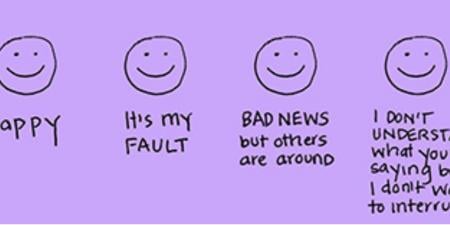Abstract
Violence is best understood as an epidemic health problem, and it can be effectively prevented and treated using health methods to stop events and outbreaks and to reduce its spread. This health framing is important because it recognizes that violence is a threat to the health of populations, that exposure to violence causes serious health problems, and that violent behavior is contagious and can be treated as a contagious process. Relatively standard and highly effective health approaches to changing behaviors and norms are increasingly being applied to the problem of violence and are showing strong evidence of impact among individuals and communities. We need to mobilize our nation’s health care and public health systems and methods to work with communities and other sectors to stop this epidemic.
Introduction
Because of its pervasiveness and far-reaching effects, violence is one of the most devastating national and global challenges we face. In the United States, homicide is the fifth leading cause of death for those under age 45 [1]. Violence not only causes injury and death; it also erodes the physical, psychological, social, and economic health and development of nearly everyone in affected communities, reducing life expectancy, inflicting trauma, limiting opportunity and achievement, and further entrenching inequities [2-10].
Recent advances in neuroscience, behavioral science, and epidemiology demonstrate that violence behaves like other contagious epidemics [11], yet violence is not primarily managed by the health sector, and health professionals are not the principal spokespersons or policy advocates on the issue. While health and public health methods for stopping violence exist and have been proven effective, they are underutilized and under-resourced [12, 13].
Health professionals have ethical responsibilities to fully understand violence; to convey accurate information to patients, families, and the community; to provide the best care and follow-up to ensure recovery from violence; and to help prevent violence. We health professionals also have an ethical obligation to educate the public and policymakers about the new scientific understanding of violence as a contagious process that has emerged. It is our job to share this new understanding to shift the world’s thinking toward scientifically grounded solutions for violence prevention. This paper outlines what is known about violence as a health issue and contagious process, effective programs for reducing violence, and practitioners’ obligations to reverse this epidemic by acting on this new knowledge.
Violence Is a Contagious Health Problem
It is now scientifically clear that violence behaves like a contagious and epidemic disease [11]. Violence meets the dictionary definition of disease (characteristic signs and symptoms causing morbidity and mortality [14]) and of contagious (transmissible, causing more of itself [11]). Violence also exhibits the population and individual characteristics of contagious epidemics—clustering, geo-temporal spreading, and person-to-person transmission [11, 15-21]. Incubation periods, defined as the time from infection to evidence of clinical disease, are variable in both infectious diseases and violence. Some other infectious diseases such as malaria and tuberculosis have incubation periods that range from weeks to years. Incubation periods for violence can also vary greatly. They can be rapid (as with cholera) for riots, gang wars, or the genocide in Rwanda [22], or they can be longer (as with tuberculosis) for family or community violence, where the period between being subjected to child abuse, for example, and becoming a perpetrator of violence may be years or decades [23, 24].
People at heightened risk for violence have acquired this susceptibility in the same way that people acquire other contagious diseases—through exposure. The particular contagion of violence is initiated by victimization or visual exposure and mediated by the brain, just as the lungs mediate replication of tuberculosis or the intestines cholera. The brain processes violence exposure into scripts, or copied behaviors, and unconscious social expectations. This processing can also lead to several situationally adaptive responses including aggression, impulsivity, depression, stress, exaggerated startle responses, and changes in neurochemistry [12]. The result in each case is production of more of what there was an exposure to, i.e., transmission to subsequent person(s) or groups.
Past exposure to violence is the strongest predictor of violent behavior [25], and each violent event represents missed prior opportunities for prevention and current opportunities to stem progression and spread. Studies have shown that exposure to violence from victimization or direct visual exposure increases the risk of chronic violent behavior thirtyfold [15]. Exposure to peers who are victims in one’s social network also increases the risk of violent victimization [25], similar to the elevated infection risks of close contacts of persons with tuberculosis [26].
As is the case in most contagious processes, not all persons exposed express the clinical condition of violent behavior, as there are factors that influence uptake—in particular, proximity, dose, and age. Other factors, such as poverty, poor education, and family structure, should be understood as modulating factors [12]. As with other diseases, these modulating factors are important, but specific strategies for interrupting progression in a person or transmission in the community provide the best opportunities for reversal of the problem. These processes, whereby persons exposed to violence are at heightened risk for perpetration of violence, are thought to be responsible for contagions of child abuse, intimate partner violence, street violence, suicide, mass shootings, riots, and terrorism [27]. These types of violence should be understood as syndromes of the same disease process that differ by context.
Health and Public Health Methods to Prevent Violence
New methods are now available for stopping the spread of violence that are tailored to its disease-like characteristics. The public health sector has a strong record of effectively preventing disease—including stopping epidemic disease—changing norms and behaviors, and reaching high-risk populations. The epidemic control approach to reducing violence will be highly recognizable to those who have worked in infectious and epidemic control. Community-based health workers are selected, trained, supervised, and supported under the guidance of the health sector. Health workers map out areas of highest transmission and symptom manifestation, reach out to and intervene with those displaying clinical signs to reduce further transmission using methods tailored to the infectious agent at play, detect close contacts and others with emergent symptoms or at highest risk of future contraction, and render all those at highest risk less symptomatic and likely to transmit. Through these methods, health workers reduce spread of the contagion and reverse the epidemic process. As with other contagious health problems such as AIDS and Ebola, new protective behaviors and norms are then promoted and supported at the community level [28].
Over the last 15 years, Cure Violence (the initiative with which the authors are affiliated) and other organizations have used these epidemic control methods to reduce community violence in dozens of communities in the US and around the world [27, 29]. The Cure Violence approach employs violence interrupters, outreach workers, and hospital responders to prevent violent events and retaliations, reduce risk among those most likely to become violent, and shift norms to discourage the use of violence. Violence interrupters work to detect and interrupt conflicts to prevent them from escalating into potentially fatal violence. Outreach workers identify those at highest risk and work to decrease their likelihood of violence by addressing their risk factors. Community-based hospital responders provide immediate crisis intervention to victims of violence at hospital trauma centers, work to prevent retaliation or subsequent re-injury, and address psychological trauma that the victims experience as a result of their violent victimization. Each of these workers is hired from the communities being served based upon their credibility with those at highest risk and is extensively trained in techniques needed for the work, including methods of conflict detection and mediation, behavior change, norm change, and epidemic control strategies. This approach to violence reduction is complementary to and augments the vital public safety role of law enforcement.
Independent multisite evaluations of programs using this approach have found significant reductions in violence. An evaluation of the Cure Violence approach implemented in Chicago found that the Chicago program was associated with an up to almost 70 percent reduction in shootings and killings in some areas and an up to 100 percent reduction in retaliatory homicides across seven sites over a 33-79 month period [30]. In Baltimore, one historically violent neighborhood had a 56 percent decrease in killings and 34 percent decrease in shootings over a two-year period [31]. In New York City, two evaluations found significant reductions in shootings and killings, including a recent evaluation that found a 63 percent reduction in shootings in the Bronx over a four-year period [32, 33]; and one site surpassed 1,000 days without a gun killing in the community [34]. Similar results are being reported in several other cities in the US and abroad [35].
Ethical Implications of Understanding Violence as a Health Issue
Given evidence of the contagious nature of violence and the effectiveness of violence prevention programs using the epidemic control approach, our understanding of our role as health practitioners in relation to the problem of violence must now evolve. First, as part of our ethical obligations, we must more fully understand the essential components for providing competent care and follow up to victims of violence, including those with physical injuries, those traumatized by exposure, and communities as a whole. In some instances, and particularly in the case of community violence, victims of violence are at greater risk to be involved in future violence. Thus, in addition to acute care, we must provide intervention aimed at reducing risk of patients’ re-injury, retaliation, or engagement in subsequent violence. Persons traumatized from exposure to violence must be identified and treated based upon the severity of their trauma. There is a role for all health practitioners who come into contact with people exposed to violence in providing screening, trauma-informed care, and follow up.
Health professionals should also provide information on violence as a contagious health problem to patients and the community so that individuals can limit their own exposure and seek treatment for trauma when needed. Patient education is a regular role for health practitioners in working to change behaviors, such as dietary behaviors, encouraging safe sex practices, or recommending other types of preventative interventions.
Finally, as health practitioners, we have credibility as spokespersons and thus need to step into this role more proactively and with greater visibility. We have the ability to provide a health framework on violence and its transmission, as we did for AIDS and Ebola, and to encourage more effective policies and practices that will lead to better outcomes. During most epidemics, fear is prevalent, but accurate information provided by health professionals helps ensure the best responses to and outcomes for those affected and the general public.
Conclusion
Violence is best understood as an epidemic health problem. It is transmitted through exposure, which is mediated by the brain and social processes, and can be effectively prevented and treated using health methods. This scientifically grounded understanding of violence holds potential for a fundamental shift in how violence and persons who show symptoms of it are treated. Recognition and treatment of violence as a health crisis is long overdue. To date, the health sector and health professionals have been highly underutilized for the prevention, treatment, and control of violence [36]. Health practitioners—from pediatricians to emergency medical personnel, from nurses to public health professionals, from mental health professionals to trauma specialists, and especially community health workers—need to step up and use new detection and intervention methods to treat violence and to advocate for competent care for all, both through existing health care institutions and a more robust community health system. These new methods should be widely used and supported within the health sector and in the community through trainings, curricula, and standards of practice, and further advanced through a reprioritization of resources to support health-based approaches to reducing and preventing violence. Now is the time to for our nation’s health care and public health systems to work with communities and other sectors to stop this epidemic. Each of us has a role in making this happen.
References
-
Centers for Disease Control and Prevention. Leading causes of death reports, national and regional, 1999-2015. https://webappa.cdc.gov/sasweb/ncipc/leadcaus10_us.html. Updated June 24, 2015. Accessed September 11, 2017.
- Felitti VJ, Anda RF, Nordenberg D, et al. Relationship of childhood abuse and household dysfunction to many of the leading causes of death in adults: The Adverse Childhood Experiences (ACE) study. Am J Prev Med. 1998;14(4):245-258.
- Jewkes RK, Dunkle K, Nduna M, Shai N. Intimate partner violence, relationship power inequity, and incidence of HIV infection in young women in South Africa: a cohort study. Lancet. 2010;376(9734):41-48.
- Singer MI, Anglin TM, Song LY, Lunghofer L. Adolescents’ exposure to violence and associated symptoms of psychological trauma. JAMA. 1995;273(6):477-482.
- Bell CC, Jenkins EJ. Traumatic stress and children. J Health Care Poor Underserved. 1991;2(1):175-185.
-
Herman JL. Trauma and Recovery: The Aftermath of Political Violence—from Domestic Abuse to Political Terror. New York, NY: Basic Books; 1992.
- Foy DW, Goguen CA. Community violence-related PTSD in children and adolescents. PTSD Res Q. 1998;9(4):1-6.
- Dubow EF, Huesmann LR, Boxer P. A social-cognitive-ecological framework for understanding the impact of exposure to persistent ethnic-political violence on children’s psychosocial adjustment. Clin Child Fam Psychol Rev. 2009;12(2):113-126.
- Delaney-Black V, Covington C, Ondersma SJ, et al. Violence exposure, trauma, and IQ and/or reading deficits among urban children. Arch Pediatr Adolesc Med. 2002;156(3):280-285.
-
Irvin-Erickson Y, Bing B, Gurvis A, Mohr E. The effect of gun violence on local economies: gun violence, business, and employment trends in Minneapolis, Oakland, and Washington, DC. Urban Institute; November 2016. https://www.urban.org/sites/…/the-effect-of-gun-violence-on-local-economies_0.pdf. Accessed November 15, 2017.
-
Slutkin G. Violence is a contagious disease. In: Patel DM, Simon MA, Taylor RM, eds. Contagion of Violence: Workshop Summary. Washington, DC: National Academies Press; 2013:94-111. https://www.nap.edu/read/13489/chapter/8#94. Accessed September 11, 2017.
-
Ransford C, Slutkin G. Seeing and treating violence as a health issue. In: Brookman F, Maguire ER, Maguire M, eds. The Handbook of Homicide. Chichester, West Sussex, England: Wiley-Blackwell; 2017:601-625.
-
State of the states: 2015 report. Atlanta, GA: Safe States Alliance; 2016. http://www.safestates.org/resource/resmgr/2015sots/2015_SOTS_Report_FINAL.pdf.Accessed November 15, 2017.
-
Dorland’s Illustrated Medical Dictionary. 32nd ed. Philadelphia, PA: Elsevier Saunders; 2011.
-
Spano R, Rivera C, Bolland JM. Are chronic exposure to violence and chronic violent behavior closely related developmental processes during adolescence? Crim Justice Behav. 2010;37(10):1160-1179.
- Zeoli AM, Pizarro JM, Grady SC, Melde C. Homicide as infectious disease: using public health methods to investigate the diffusion of homicide.. Justice Q. 2014;31(3):609-632.
-
Towers S, Gomez-Lievano A, Khan M, Mubayi A, Castillo-Chavez C. Contagion in mass killings and school shootings. PLoS One. 2015;10(7):e0117259. http://journals.plos.org/plosone/article?id=10.1371/journal.pone.0117259. Accessed November 15, 2017.
-
Kaufman J, Zigler E. Do abused children become abusive parents? Am J Orthopsychiatry. 1987;57(2):186-192.
- Bingenheimer JB, Brennan RT, Earls FJ. Firearm violence exposure and serious violent behavior. Science. 2005;308(5762):1323-1326.
- Archer D, Gartner R. Violent acts and violent times: a comparative approach to postwar homicide rates. Am Sociol Rev. 1976;4(6):937-963.
- Midlarsky M, Crenshaw M, Yoshida F. Why violence spreads: the contagion of international terrorism. Intern Studies Q. 1980;24(2):262-298.
- Verwimp P. Death and survival during the 1994 genocide in Rwanda. Popul Stud (Camb). 2004;58(2):233-245.
- Ehrensaft MK, Cohen P, Brown J, Smailes E, Chen H, Johnson JG. Intergenerational transmission of partner violence: a 20-year prospective study.. J Consult Clin Psychol. 2003;71(4):741-753.
- Huesmann LR, Moise-Titus J, Podolski CL, Eron LD. Longitudinal relations between children’s exposure to TV violence and their aggressive and violent behavior in young adulthood: 1977-1992. Dev Psychol. 2003;39(2):201-221.
- Papachristos AV, Wildeman C, Roberto E. Tragic, but not random: the social contagion of nonfatal gunshot injuries. Soc Sci Med. 2015;125139-150.
- Comstock GW. Epidemiology of tuberculosis. Am Rev Respir Dis. 1982;125(3 Pt2):8-15.
-
Slutkin G, Ransford C, Decker RB. Cure violence: treating violence as a contagious disease. In: Maltz MD, Rice SK. Envisioning Criminology: Researchers on Research as a Process of Discovery. Cham, Switzerland: Springer International; 2015:43-56.
- Slutkin G, Okware S, Naamara W, et al. How Uganda reversed its HIV epidemic. AIDS Behav. 2006;10(4):351-360.
-
Butts JA, Roman CG, Bostwick L, Porter JR. Cure violence: a public health model to reduce gun violence. Ann Rev Public Health. 2015;36:39-53.
-
Skogan WG, Hartnett SM, Bump N, Dubois J. Evaluation of CeaseFire-Chicago. Evanston, IL: Northwestern University Institute for Policy Research; 2008. https://www.ncjrs.gov/pdffiles1/nij/grants/227181.pdf. Accessed September 11, 2017.
-
Webster DW, Whitehill JM, Vernick JS, Parker EM. Evaluation of Baltimore’s Safe Streets program: effects on attitudes, participants’ experiences, and gun violence. Baltimore, MD: Johns Hopkins Bloomberg School of Public Health; January 11, 2012. http://baltimorehealth.org/wp-content/uploads/2016/06/2012_01_10_JHSPH_Safe_Streets_evaluation.pdf.Accessed September 11, 2017.
-
Delgado SA, Alsabahi L, Wolff K, Alexander N, Cobar P, Butts JA. Demoralizing violence: the effects of Cure Violence in the South Bronx and East New York, Brooklyn. John Jay College of Criminal Justice Research and Evaluation Center. https://johnjayrec.nyc/2017/10/02/cvinsobronxeastny/. Published October 2, 2017. Accessed November 15, 2017.
-
Picard-Fritsche S, Cerniglia L. Testing a public approach to gun violence: an evaluation of Crown Heights Save Our Streets, a replication of the Cure Violence Model. Center for Court Innovation; 2013. https://www.courtinnovation.org/sites/default/files/documents/SOS_Evaluation.pdf.Accessed November 28, 2017.
-
Greene J, Pranis K. Gang Wars: The Failure of Enforcement Tactics and the Need for Effective Public Safety Strategies. Washington, DC: Justice Policy Institute; July 2007. http://www.justicepolicy.org/uploads/justicepolicy/documents/07-07_rep_gangwars_gc-ps-ac-jj.pdf. Accessed September 11, 2017.
-
Barker CJ. East New York highlights 1000 days of free gun-related homicides. Amsterdam News. August 17, 2017. http://amsterdamnews.com/news/2017/aug/17/east-new-york-highlights-1000-days-free-gun-relate/. Accessed August 31, 2017.
-
For a list of results and upcoming studies, see: Cure Violence. Results. http://cureviolence.org/results/. Accessed November 28, 2017.
-
Greene J, Pranis K. Gang Wars: The Failure of Enforcement Tactics and the Need for Effective Public Safety Strategies. Washington, DC: Justice Policy Institute; July 2007. http://www.justicepolicy.org/uploads/justicepolicy/documents/07-07_rep_gangwars_gc-ps-ac-jj.pdf. Accessed September 11, 2017.



